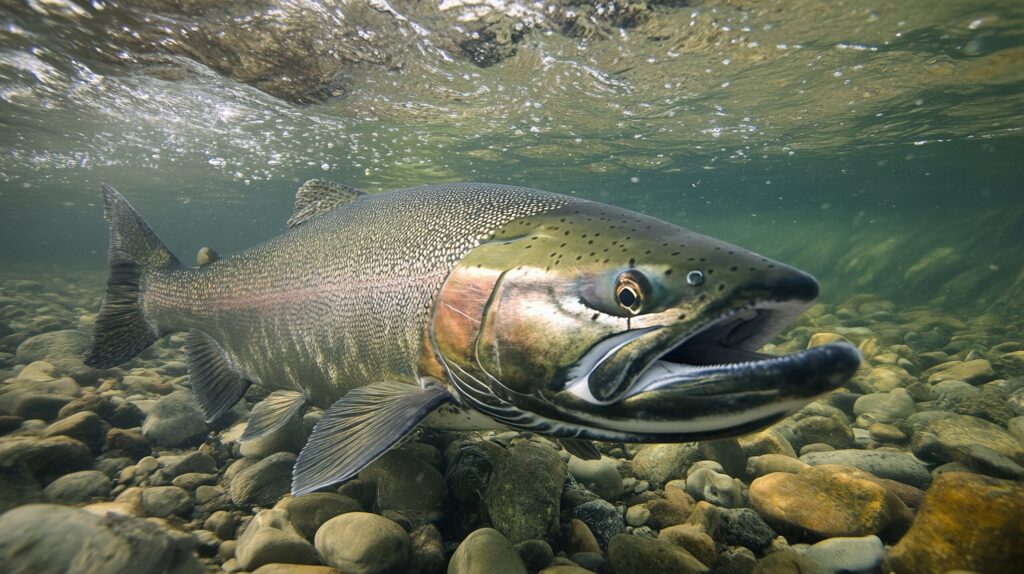Oncorhynchus tshawytscha

Habitat, Diet & Status
Habitat: Coastal rivers and ocean waters from California to British Columbia
ESA Status: Varies by population—several runs are listed as Threatened
Diet: Insects and plankton (as juveniles); squid, herring, and other fish (as adults)
Chinook salmon are the largest of the Pacific salmon and a cornerstone species in coastal ecosystems. Born in freshwater streams, they migrate to the ocean, mature, and return to their birthplaces to spawn. Their epic migrations move nutrients across thousands of miles and link rivers, forests, and the sea in one of nature’s most impressive life cycles.
The Message and the Watershed
Coastal Chinook face mounting threats from habitat loss, dams, warming waters, and pollution. Logging and development can erode streambanks and destroy spawning beds, while reduced snowpack and rising temperatures shrink and warm the rivers they depend on. Many river systems that once supported abundant salmon runs now host only a fraction of their former populations.
When salmon die after spawning, their bodies nourish everything from eagles and bears to forest soil and trees. Dozens of species depend on their return. Even otters and murrelets are indirectly connected through the broader marine food web salmon help support. Protecting salmon means protecting the entire watershed—from headwaters to estuary.
What You Can Do: Support habitat restoration projects and responsible forestry practices that protect streams and river corridors. Stay informed about local water policy and fish passage initiatives. Celebrate and share the story of salmon as both a species and a living thread connecting land, water, and culture.
